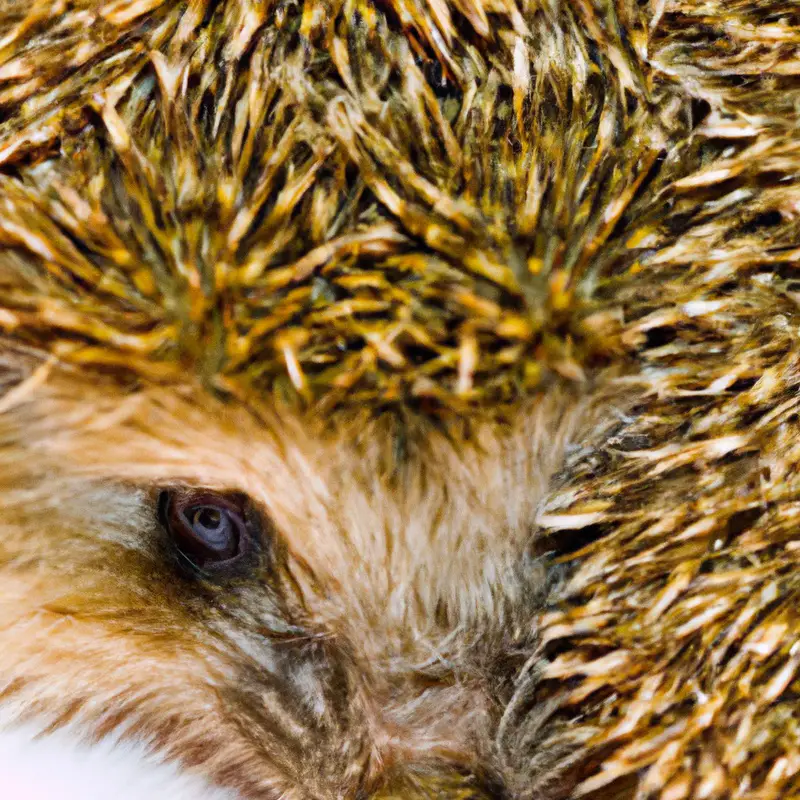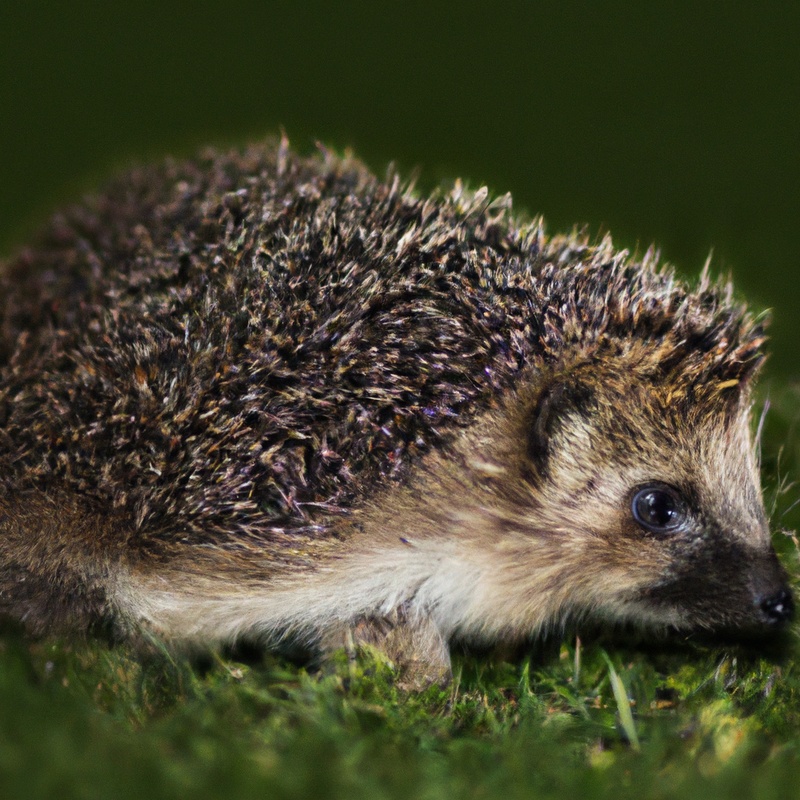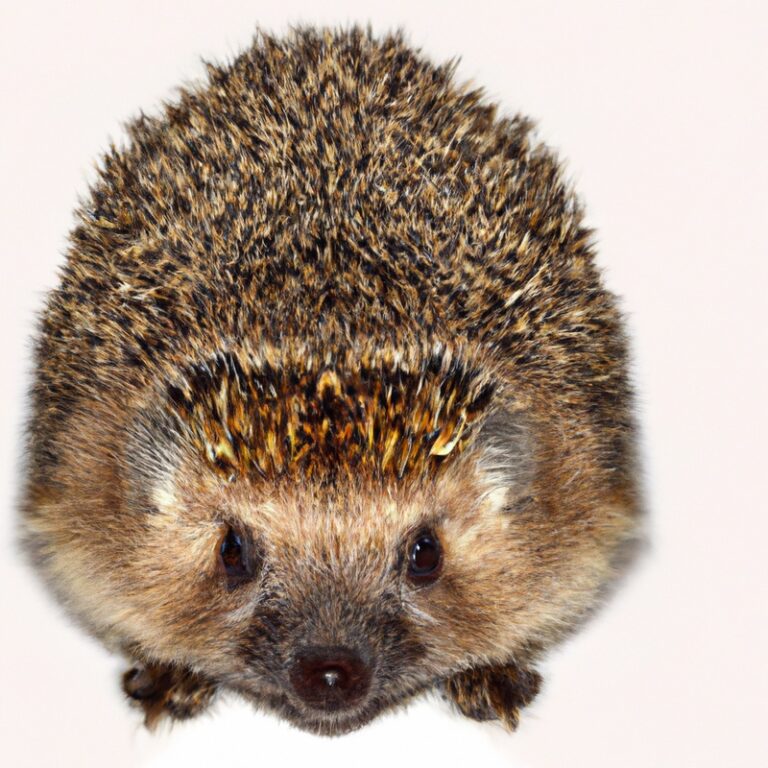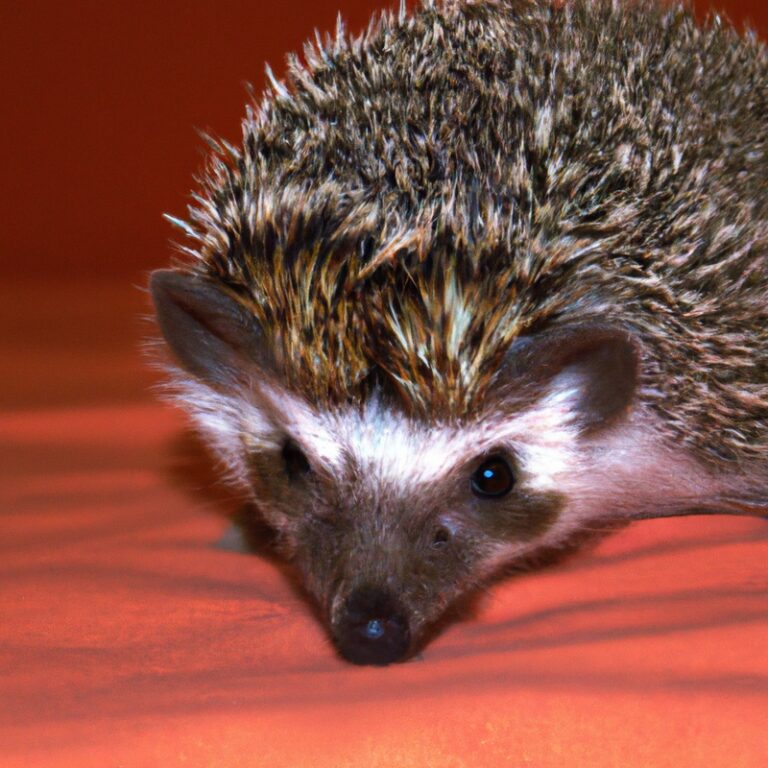How To Create a Hedgehog-Friendly Community Network?
Key Takeaways:
- Plant native shrubs and create habitats that provide shelter and food for hedgehogs.
- Educate and engage community members about the importance of hedgehog conservation.
- Minimize the use of pesticides and promote organic gardening practices.
- Create hedgehog-friendly access points, such as small holes in fences, to allow them to freely roam between gardens.
Are you looking to make a positive impact on your community and support the conservation of local wildlife? Well, look no further than creating a hedgehog-friendly community network! Hedgehogs, those spiky and notoriously adorable creatures, are in need of our help.
In this article, we’ll explore the importance of understanding hedgehogs and their needs, as well as providing you with practical steps to create a hedgehog-friendly community network.
From researching and educating to connecting with local organizations and individuals, we’ll guide you through creating hedgehog-friendly green spaces and spreading awareness. Let’s work together to create a welcoming environment for these fascinating creatures and celebrate the successes along the way!
| Steps | Actions |
|---|---|
| 1 | Learn about hedgehog behavior and habitats. |
| 2 | Create suitable hedgehog-friendly spaces. |
| 3 | Provide food and water sources. |
| 4 | Minimize the use of pesticides and chemicals. |
| 5 | Build hedgehog highways and tunnels. |
| 6 | Spread awareness and education within the community. |
| 7 | Collaborate with local organizations and authorities. |
Understanding hedgehogs and their needs
Hedgehogs have specific habitat and lifestyle requirements that need to be understood to create a hedgehog-friendly community network.
The decline in hedgehog populations highlights the importance of providing hedgehog-friendly features in gardens and green spaces.
Hedgehog’s habitat and lifestyle
Hedgehogs are fascinating creatures that have specific habitat and lifestyle needs. They are nocturnal animals, which means they are active at night and sleep during the day.
Hedgehogs prefer areas with plenty of vegetation, such as gardens, parks, and woodlands, where they can find shelter and food.
They like to forage for insects, worms, slugs, and snails, so having a diverse and pesticide-free environment is important. Creating hedgehog-friendly garden features, like log piles, hedgehog houses, and shallow water sources, can provide them with safe places to live and thrive.
The decline of hedgehog populations
The decline of hedgehog populations is a concerning issue.
Factors such as habitat loss, increased urbanization, pesticide use, and road accidents contribute to their decline.
Lack of access to suitable food sources and the decline of their natural habitats are also key factors.
We need to raise awareness and take action to create hedgehog-friendly spaces, such as providing access to food, water, and shelter, and reducing the use of pesticides.
Every effort counts in helping these lovely creatures thrive once again.

Hedgehog-friendly features in gardens and green spaces
To create a hedgehog-friendly garden or green space, there are a few key features you can incorporate:
- Provide shelter: Hedgehogs need somewhere to hibernate and nest. Consider leaving areas of your garden wild and overgrown, or create a hedgehog house using natural materials.
- Create a water source: Hedgehogs need access to fresh water for drinking and bathing. A shallow dish or a small pond with a gentle slope can serve as a water source.
- Avoid using chemicals: Pesticides and herbicides can be harmful to hedgehogs. Opt for organic gardening methods and avoid using chemicals in your garden.
- Install hedgehog-friendly fencing: Hedgehogs can struggle to navigate certain types of fencing. Choose fencing with gaps or holes that allow hedgehogs to come and go freely.
- Plant native shrubs and flowers: Native plants provide a natural food source for hedgehogs and attract insects for them to feed on. Aim for a diverse range of plants that offer both shelter and food.
By incorporating these hedgehog-friendly features, you can create a safer and more welcoming environment for these adorable creatures in your garden or green space.

Steps to create a hedgehog-friendly community network
Step 1: Research and educate Step 2: Connect with local organizations and individuals Step 3: Creating hedgehog-friendly green spaces Step 4: Hedgehog-friendly landscaping and gardening tips Step 5: Spreading awareness and involving the community
Step 1: Research and educate
Step 1: Research and educate Start by researching hedgehogs in your area. Learn about their habitat, behavior, and needs.
Share this knowledge with your community to raise awareness about hedgehog conservation.
Organize educational workshops, distribute informative materials, and collaborate with local schools. By educating others, you can inspire them to take action and create a hedgehog-friendly environment.
Remember, knowledge is the first step towards positive change.
Step 2: Connect with local organizations and individuals
To create a hedgehog-friendly community network, it’s important to connect with local organizations and individuals who share your passion for these adorable creatures.
Reach out to wildlife rescue centers, conservation groups, and even local garden clubs.
They can provide valuable knowledge, resources, and support to help you make a real difference.
Additionally, connect with fellow hedgehog enthusiasts in your community through social media groups or local events.
Together, you can create a network of like-minded individuals working towards a common goal.
Step 3: Creating hedgehog-friendly green spaces
To create hedgehog-friendly green spaces, there are a few important steps you can take.
Start by leaving wild areas in your garden, such as piles of leaves or logs, as these make great hiding spots for hedgehogs.
Avoid using pesticides and chemicals, as these can harm hedgehogs and their food sources.
Another tip is to create hedgehog highways by cutting small holes in fences and walls to allow hedgehogs to roam freely between gardens.
Finally, consider planting native plants to attract insects, which are an important part of a hedgehog’s diet.
Step 4: Hedgehog-friendly landscaping and gardening tips
Create a hedgehog-friendly environment in your community by making a few changes to your landscaping and gardening practices. Here are some tips:
- Provide shelter: Leave areas of your garden wild, with piles of leaves, logs, and brushwood. These make great hiding spots for hedgehogs.
- Water sources: Ensure there is a shallow dish of fresh water available for hedgehogs to drink from. Keep it filled, especially during hot weather.
- Avoid pesticides: Hedgehogs can be harmed by chemical pesticides. Opt for natural alternatives or use organic gardening methods.
- Hedgehog highways: Create small holes or gaps in fences and walls to allow hedgehogs to move freely between gardens. This helps them find food and potential mates.
- Choose hedgehog-friendly plants: Plant native species that provide food and shelter for hedgehogs, such as native shrubs, wildflowers, and fruit-bearing trees.
Remember, small changes in your landscaping and gardening practices can make a big difference in creating a hedgehog-friendly community network.
Step 5: Spreading awareness and involving the community
Step 5: Spreading awareness and involving the community Spreading awareness and involving the community is essential to create a hedgehog-friendly network. Here are some effective ways to achieve this:
- Organize community events or workshops to educate people about hedgehogs and their needs.
- Use social media platforms to share information and raise awareness about hedgehog conservation.
- Collaborate with local schools and educational institutions to include hedgehog education in their curriculum.
- Encourage community members to create hedgehog-friendly spaces in their gardens by providing them with resources and guidance.
- Engage local businesses, organizations, and authorities in your efforts to ensure their support and participation.
By actively involving the community, we can create a network of individuals who are committed to protecting hedgehogs and their habitats.
Creating a welcoming environment for hedgehogs
To create a welcoming environment for hedgehogs, focus on providing suitable shelter options and ensuring a steady supply of food and water. Additionally, take steps to minimize risks from natural predators.
Providing suitable hedgehog shelter options
Hedgehogs need suitable shelter options to feel safe and secure in your community.
Here are some options to consider:
- Hedgehog houses: Provide specially designed wooden or plastic shelters with an entrance hole and a cozy interior for hedgehogs to nest in.
- Piles of leaves and logs: Create natural piles of leaves and logs in your garden, which can serve as ideal hiding spots and nesting areas for hedgehogs.
- Compost bins: Hedgehogs often find compost bins attractive for nesting. Ensure they have an easily accessible entrance and are well-ventilated.
- Untidy corners: Leaving some areas of your garden untouched and untidy, such as overgrown vegetation or brush piles, will provide hiding places for hedgehogs.
Remember, providing a variety of shelter options can help hedgehogs thrive in your community!
Food and water sources for hedgehogs
Hedgehogs need a variety of food and water sources to thrive in your community. Ensure hedgehogs have access to fresh water by providing shallow dishes; they can’t reach deep containers.
Offer a range of food such as cat or dog food, mealworms, and chopped fruits.
Avoid feeding them milk or bread, as this can upset their digestive system. Consider creating “hedgehog highways” in your fences to enable them to move freely between gardens for foraging.
Provide safe havens like log piles or purpose-built hedgehog houses for shelter.
Natural predators and how to minimize risks
Hedgehogs have several natural predators, including foxes, badgers, and large birds of prey.
To minimize the risks posed by these predators, there are a few steps you can take.
Firstly, you can create a hedgehog-friendly garden by providing them with plenty of dense foliage and hiding places.
Secondly, avoid using chemicals and pesticides that can harm hedgehogs or reduce their prey.
Additionally, you can install barriers or fencing to deter larger predators from entering your garden.
Lastly, provide a secure hibernation spot, such as a hedgehog house, to keep them safe during the winter months.
Common challenges and solutions
Creating a hedgehog-friendly community network may encounter obstacles, but there are solutions available to address these challenges.
Encountering obstacles in creating a hedgehog-friendly community network
Creating a hedgehog-friendly community network can have its challenges. One obstacle is limited green spaces, which can make it difficult for hedgehogs to find suitable habitats.
To address this, you can encourage the creation of hedgehog-friendly gardens or allotments.
Another challenge is the use of pesticides, which can be harmful to hedgehogs. Educating the community about alternative pest control methods can help mitigate this obstacle.
Additionally, maintaining hedgehog-friendly structures, such as access points in fences or connecting green spaces, can aid in creating a safe network for hedgehogs to navigate.
Dealing with misconceptions and myths about hedgehogs
Misconceptions and myths about hedgehogs are common, but it’s important to separate fact from fiction. Let me debunk a few of these common misconceptions for you:
- “Hedgehogs are rodents”: False. Hedgehogs actually belong to the family Erinaceidae, which makes them closer to shrews and moles.
- “Hedgehogs can shoot their quills”: Not true. Hedgehogs cannot shoot or throw their quills. They curl up into a tight ball as a self-defense mechanism.
- “Hedgehogs are aggressive and dangerous”: Incorrect. Hedgehogs are generally shy and docile creatures. They only curl up or hiss when they feel threatened.
- “Hedgehogs are nocturnal animals”: Partially true. While hedgehogs are mostly active at night, they can be seen during the day, especially in cooler weather.
- “Hedgehogs should always be released into the wild”: False. Hedgehogs that have been hand-reared or rescued should not be released unless they can’t survive in captivity. They need proper care and support.
By understanding the truth about hedgehogs and dispelling these myths, we can better appreciate and protect these adorable creatures.
Addressing potential conflicts with other wildlife species
Addressing potential conflicts with other wildlife species is an important aspect of creating a hedgehog-friendly community network. Here are a few ways to minimize these conflicts:
- Provide adequate food and water sources for other species so they are less likely to venture into hedgehog areas.
- Create safe zones for hedgehogs, such as fenced-in gardens or designated feeding areas, to prevent them from coming into contact with potentially dangerous animals.
- Implement wildlife-friendly practices that benefit multiple species, such as planting native vegetation and avoiding the use of harmful pesticides.
- Educate the community about the importance of coexisting with a variety of wildlife and encourage responsible pet ownership to reduce conflicts.
By being mindful of the needs and behaviors of other wildlife species, we can create a harmonious environment that supports the presence of hedgehogs while minimizing conflicts with other animals.
Monitoring and evaluating the success of a hedgehog-friendly community network
To ensure the success of your hedgehog-friendly community network, it is important to monitor hedgehog presence and activity and collect relevant data through surveys.
Importance of monitoring hedgehog presence and activity
Monitoring hedgehog presence and activity is important for various reasons. By keeping track of their numbers and behavior, we can assess the health of the hedgehog population and identify any decline or increase in their population.
Monitoring can also help us understand their habitat preferences and how they are affected by human activities.
This information is crucial for developing effective conservation strategies and ensuring the long-term survival of these adorable creatures.
Conducting surveys and collecting data
To effectively monitor and evaluate the success of a hedgehog-friendly community network, conducting surveys and collecting data is essential.
Surveys can be conducted to gather information about hedgehog populations, habitat quality, and community engagement.
Data can be collected through field observations, camera trapping, and tracking systems.
This information will help track the progress of the network, identify areas for improvement, and measure the impact of conservation efforts.
Collecting accurate and comprehensive data is crucial for making informed decisions and ensuring the long-term sustainability of the network.
Celebrating achievements and adapting strategies if needed
It’s important to take a moment to celebrate the achievements of your hedgehog-friendly community network. Recognize the progress you’ve made in creating a safe and welcoming environment for hedgehogs.
This celebration helps boost morale and motivation for continued efforts.
Along the way, remember to remain adaptable. If certain strategies aren’t yielding the desired results, be open to adjusting your approach.
Adaptation ensures that you can overcome challenges and continue making a positive impact on hedgehog conservation.
Frequently Asked Questions (FAQs)
What should I do if I find an injured or sick hedgehog?
If you find an injured or sick hedgehog, it’s important to take immediate action to help the little creature. Here’s what you can do:
- Protect yourself: Wear gloves or use a towel to handle the hedgehog, as they may bite when distressed.
- Provide warmth: Place the hedgehog in a covered box or cage with a clean towel or bedding material. Place a hot water bottle wrapped in a towel nearby to keep them warm.
- Contact a wildlife rescue center: Reach out to a local wildlife rescue center or hedgehog rehabilitation organization for guidance. They have the expertise to provide proper care and treatment to the hedgehog.
- Offer water and food: If the hedgehog is responsive and able to drink, provide a shallow dish of fresh water. Avoid giving them cow’s milk, as it can cause digestive issues. Wait for advice from the rescue center before offering any food.
Remember, it’s crucial to seek professional help as soon as possible to ensure the hedgehog receives the best care.
How can children and schools get involved in creating a hedgehog-friendly community network?
Children and schools can play a crucial role in creating a hedgehog-friendly community network. Here’s how they can get involved:
- Education: Schools can teach children about hedgehogs and their importance in the ecosystem. This can include topics like their habitats, diet, and conservation status.
- Habitat creation: Children can work with their schools to create hedgehog-friendly habitats in the form of wild areas, log piles, and hedgehog houses in their school grounds.
- Awareness campaigns: Children can organize awareness campaigns in their schools and local communities, spreading the word about the importance of hedgehog conservation and ways to make their neighborhoods hedgehog-friendly.
- Reduce pesticide use: Schools can encourage children and their families to reduce the use of pesticides in their gardens, as these chemicals can harm hedgehogs and their food sources.
- Safe road-crossings: Schools can work with local authorities to create safe road-crossing points for hedgehogs, reducing the risk of road accidents.
By involving children and schools in creating a hedgehog-friendly community network, we can ensure a brighter future for these adorable creatures.
Are artificial hedgehog homes effective?
Artificial hedgehog homes, commonly known as hedgehog houses, are an effective way to provide shelter and support for these adorable creatures.
These homes mimic natural hibernation spots and safe nesting areas, offering hedgehogs protection from predators and harsh weather conditions.
They can be placed in gardens, parks, or other suitable locations.
To increase their effectiveness, ensure the homes are well-insulated and located in quiet and undisturbed areas.
Remember, creating a hedgehog-friendly community is a collective effort, and providing artificial homes is a great step towards supporting these spiky little friends.
Final Verdict
Creating a hedgehog-friendly community network is a crucial step in protecting and conserving these beloved creatures.
By understanding their habitat and needs, educating and connecting with local organizations and individuals, and implementing hedgehog-friendly features in gardens and green spaces, we can make a real difference in their survival.
Providing suitable shelter, food, and minimizing risks from natural predators are essential steps in creating a welcoming environment for hedgehogs.
Overcoming challenges, monitoring the success, and involving the community in spreading awareness are key factors in sustaining a hedgehog-friendly community network.
Together, we can ensure a bright future for these adorable creatures.








